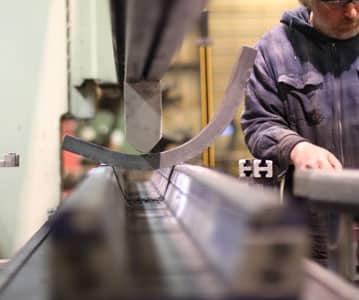When you consider the entire supply chain roadmap involved in taking a manufactured product from development to delivery, materials and production labor easily represent the vast majority of the total cost. That fact explains the understandable objective of original equipment manufacturers (OEMs) to continually reduce those costs. These are big, obvious targets.
Some OEMs view outsourced metal fabrication as a commodity or “plain vanilla” service. The category is large and crowded. Lots of suppliers can theoretically do the work. So the buyers focus on finding the resource that will cut, weld, paint and assemble for less.
But I think the population of truly qualified fabricators filters down quite quickly when an OEM emphasizes a long-term partnership focused on all aspects of value that the vendor can add, rather than pursuing the lowest price-per-part. In fact, if I prioritize the supply chain roles that Schaffer plays for small or mid-size organizations focused on total value, some of the most important contributions look like this:
• Strategic procurement. Pulling parts from Schaffer-managed inventory enables higher-volume production that can reduce costs and improve lead time to days instead of weeks. You can now utilize systems, backed by Schaffer’s experience, to forecast your needs and schedule higher-volume, more cost-effective production.
• Print optimization. A standard review during the quoting phase of a project begins the process of evolving a customer-supplied print into a complete, strategic plan for fabrication. Does holding a tolerance require an engineering change? Or will we use jigs and fixtures? Also, incoming prints might not reference welding best practices. We take the time to develop the right approach and ensure every stage of the process is clearly communicated on the print.
• Design and engineering refinement. Are you open to fabrication-driven part improvement? If your weldment is currently designed as two welded pieces, is it possible to manufacture it as a single formed piece to eliminate welding time, increase strength and reduce the cost? Whether your part is in the prototype phase or you have been making it the same way for 20 years, the process of improving manufacturability should never stop.
• Outsourcing and single-sourcing. For most OEMs, realizing growth potential isn’t necessarily a function of building in-house capacity. The answer could be accessing a world-class vendor’s established and proven processes, systems and resources. Do you look at outsourcing as “losing control” of welding, powder coating, assembly and inventory management? Or is there greater upside in leveraging a vertically integrated supplier’s specialization, technical knowledge, capacity and infrastructure?

